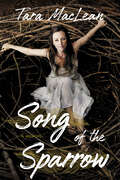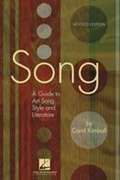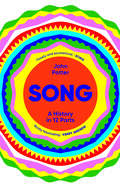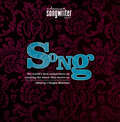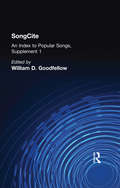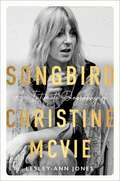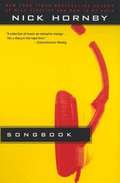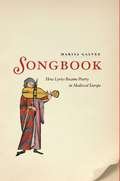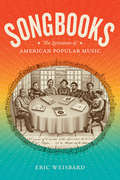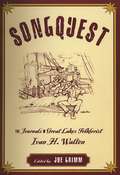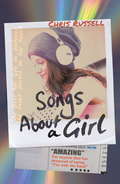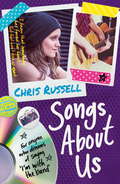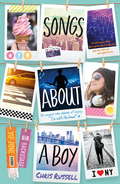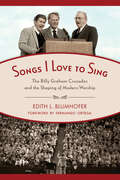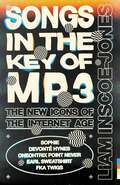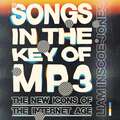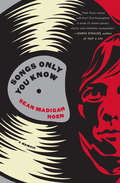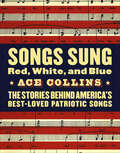- Table View
- List View
Song of the Sparrow: A Memoir
by Tara MacLeanAn astonishing memoir about how song saved a lifeSinger/songwriter Tara MacLean has had an extraordinary musical career. From being discovered singing on a BC ferry to touring with Dido, Tom Cochrane and Lilith Fair, her solo albums and those with the band Shaye have touched legions of fans. But she hasn’t, until now, disclosed the details of how the power of song saved her from a childhood filled with danger.From her earliest days in the backwoods of Prince Edward Island, Tara was surrounded by nature, the songs of her musician father and the love of her actor mother. But love was not enough to feed their growing family, nor were the Wiccan, then evangelical Christian teachings her parents followed. Hunger and uncertainty were constant companions, as were the dangers that began to enter her world. Predators can come in many forms from even the most trusted circles, and Tara soon learned that a young girl is never safe. It was only through Tara’s inner strength and the solace she found in singing that she created a refuge and a future for herself. Song of the Sparrow is a daring, heartbreaking and provocative memoir of a life filled with music, told with the same raw, open and elegant poetry that Tara’s fans have come to expect. From Tara’s childhood in PEI through her teenage years in BC to her meteoric rise in music, Song of the Sparrow reveals her remarkable strength and shows that a song and a wide-open heart are the best weapons for fighting monsters. Don’t miss Tara’s new album, Sparrow, which is being released concurrently with this memoir.
Song: A Guide to Art Song Style and Literature,
by Carol KimballCarol Kimball's comprehensive survey of art song literature has been the principal one-volume American source on the topic. Now back in print after an absence of several years, this newly revised edition includes biographies and discussions of the work of 150 composers of various nationalities, as well as articles on styles of various schools of composition.
Song: A History in 12 Parts
by John PotterFrom one of our most innovative singers, a vibrant history of song stretching from Hildegard von Bingen and Benjamin Britten to Björk &“Songs can be intensely personal (whether you hear them or sing them) and none of us would choose the same twelve songs as anyone else. My choices are based on decades of performing experience in many different genres, but I hope they will reveal aspects of our common humanity as the story evolves from the Middle Ages to the present.&” In this celebratory account, author and singer John Potter tells the European story of song. The form has captivated audiences and excited performers for centuries, from the music of the troubadours and the Christian liturgy through classical composers such as Bach and Schumann up to Britten, Berio, and the rise of popular music. Choosing twelve key works, Potter offers a personal tour through this vital tradition, from John Dowland&’s &“Flow My Tears&” to George Gershwin&’s &“Summertime.&” Throughout, he reveals who wrote and sang these joyful masterpieces—and what they mean to singers and audiences today.
Song: The World's Best Songwriters on Creating the Music that Moves Us
by J. Douglas WatermanThe secrets of songwriting from the legends of music Songis an enthralling compilation of songwriting wisdom from 100 of the biggest names in music. From country to rock to folk to alternative, this genre-spanning collection of interviews captures the anecdotes, history, and wisdom of the best songwriters around - in their words. An entertaining read as well as an indispensable guide to the art and craft of songwriting,Songis a must-have resource for the aspiring, amateur, or professional musician. Inside, you'll find entertaining and enlightening interviews from great songwriters such as Smokey Robinson, Willie Nelson, Jewel, Kenny Chesney, Cat Stevens, Jack Johnson, Sheryl Crow, John Legend, John Mellencamp, Ray Charles, Clint Black, Rob Thomas, Dolly Parton, Rufus Wainwright, Bob McDill, Lyle Lovett, Keith Urban, Beck, M. Ward, Lou Reed, Roger Miller, Grant-Lee Phillips, and John Denver.
SongCite: An Index to Poular Songs, Supplement 1
by William D. GoodfellowFirst Published in 1999. Routledge is an imprint of Taylor & Francis, an informa company.
Songbird: An Intimate Biography of Christine McVie
by Lesley-Ann JonesIn this revealing portrait of keyboardist, lyricist, and vocalist Christine Mcvie of Fleetwood Mac, readers will get an exclusive glimpse of the band's "mother figure". Christine McVie–born Christine Perfect–was the quintessentially English rock star, as both the backbone and the beating heart of Fleetwood Mac. She wrote and performed many of their greatest hits, and was dubbed 'the mother' of the band. It was Christine who contained the flock, regrouped them when they went AWOL, and always got them back on track. And yet, as the "engine" of the band during their Rumours era–an album which charted the romantic disintegration within the band–Christine's personal life was every bit as tempestuous as those of her bandmates. Told by an author who herself was friends with Christine, and with new contributions from those who knew her best, Songbird offers a true insider's view and psychological insight into Christine as a both a woman and a musician––the ultimate picture of a rock legend and a national treasure.
Songbook
by Nick Hornby"All I have to say about these songs is that I love them, and want to sing along to them, and force other people to listen to them, and get cross when these other people don't like them as much as I do"--Nick <P> Songs, songwriters, and why and how they get under our skin...Songbook is Nick Hornby's labor of love. A shrewd, funny, and completely unique collection of musings on pop music, why it's good, what makes us listen and love it, and the ways in which it attaches itself to our lives--all with the beat of a perfectly mastered mix tape.
Songbook: How Lyrics Became Poetry in Medieval Europe
by Marisa GalvezToday we usually think of a book of poems as composed by a poet, rather than assembled or adapted by a network of poets and readers. But the earliest European vernacular poetries challenge these assumptions. Medieval songbooks remind us how lyric poetry was once communally produced and received—a collaboration of artists, performers, live audiences, and readers stretching across languages and societies. The only comparative study of its kind, Songbook treats what poetry was before the emergence of the modern category “poetry”: that is, how vernacular songbooks of the thirteenth to fifteenth centuries shaped our modern understanding of poetry by establishing expectations of what is a poem, what is a poet, and what is lyric poetry itself. Marisa Galvez analyzes the seminal songbooks representing the vernacular traditions of Occitan, Middle High German, and Castilian, and tracks the process by which the songbook emerged from the original performance contexts of oral publication, into a medium for preservation, and, finally, into an established literary object. Galvez reveals that songbooks—in ways that resonate with our modern practice of curated archives and playlists—contain lyric, music, images, and other nonlyric texts selected and ordered to reflect the local values and preferences of their readers. At a time when medievalists are reassessing the historical foundations of their field and especially the national literary canons established in the nineteenth century, a new examination of the songbook’s role in several vernacular traditions is more relevant than ever.
Songbooks: The Literature of American Popular Music (Refiguring American Music)
by Eric WeisbardIn Songbooks, critic and scholar Eric Weisbard offers a critical guide to books on American popular music from William Billings's 1770 New-England Psalm-Singer to Jay-Z's 2010 memoir Decoded. Drawing on his background editing the Village Voice music section, coediting the Journal of Popular Music Studies, and organizing the Pop Conference, Weisbard connects American music writing from memoirs, biographies, and song compilations to blues novels, magazine essays, and academic studies. The authors of these works are as diverse as the music itself: women, people of color, queer writers, self-educated scholars, poets, musicians, and elites discarding their social norms. Whether analyzing books on Louis Armstrong, the Beatles, and Madonna; the novels of Theodore Dreiser, Gayl Jones, and Jennifer Egan; or varying takes on blackface minstrelsy, Weisbard charts an alternative history of American music as told through its writing. As Weisbard demonstrates, the most enduring work pursues questions that linger across time period and genre—cultural studies in the form of notes on the fly, on sounds that never cease to change meaning.
Songlab: A Songwriting Playbook for Teens
by Alex ForbesCreated exclusively with and for teen musicians, this hands-on, step-by-step program uses insight, enthusiasm, and humor to teach teens how to brainstorm ideas, craft effective lyrics, and put those lyrics to music. An award-winning and Billboard-charting songwriter and teacher, Alex Forbes has taught dozens of teens via her Manhattan workshops and coaching sessions how to turn their thoughts and feelings into incisive, evocative songs. Her music has also been heard in feature films and on TV shows like MTV's smash teen docudrama, The Hills. Chapter by chapter, Alex goes through the basic elements of the craft, including song form and dynamics, lyrics and melodies, chord construction, and killer hooks. Filled with lots of fun exercises to strengthen your abilities and your confidence, Songlab is the ideal teen's guide to making your songwriting dreams come true!
Songquest: The Journals of Great Lakes Folklorist Ivan H. Walton (Great Lakes Books Series)
by Ivan H Walton Laurie Sommers Joe GrimmIvan H. Walton was a pioneering folklorist who collected the songs and stories of aging sailors living along the shores of the Great Lakes in the 1930s. His collection is unique in the annals of Great Lakes folklore. It began as a search for songs but broadened into a collection of weather signs, shipboard beliefs, greenhorn tales, and stories of the intense rivalry between sailors and the steamboat men who replaced them. Edited by Joe Grimm, Songquest: The Journals of Great Lakes Folklorist Ivan H. Walton is a selection from the daily journals Walton wrote during his travels as a folklore collector. <P><P> It is clear that Walton, a professor of English at the University of Michigan, both admired the sailors of the Great Lakes for what they had done during their working years and worried about them as they entered the twilight of their lives. Walton went beyond the songs he set out to find and captured the pitch and roll of the Great Lakes alive with white-winged schooners. His writings provide a clear picture of the colorful individuals he met and interviewed-captains, cabin boys, tugmen, chandlers, boardinghouse owners, dredgers, and light keepers. Walton also documented the methods he used and recorded his personal thoughts about his nomadic life and the events going on around him during the 1930s, including the Great Depression, Franklin D. Roosevelt's election, and the end of Prohibition. <P><P> Songquest is a companion volume to Windjammers: Songs of the Great Lakes Sailors (Wayne State University Press, 2002), which contains the lyrics from more than a hundred of Walton's collected songs, as well as musical scores, sketches, and a compact disc of field recordings.
Songs About a Girl: Book 1 in a trilogy about love, music and fame
by Chris RussellHeartbreak, romance, fame and pop music - for anyone who's ever dreamed of saying 'I'm with the band'. From a Zoella Book Club friend.Charlie Bloom never wanted to be 'with the band'. She's happiest out of the spotlight, behind her camera, unseen and unnoticed. But when she's asked to take backstage photos for hot new boy band, Fire&Lights, she can't pass up the chance. Catapulted into a world of paparazzi and backstage bickering, Charlie soon becomes caught between gorgeous but damaged frontman Gabriel West and his boy-next-door bandmate, Olly Samson. Then, as the boys' rivalry threatens to tear the band apart, Charlie stumbles upon a mindblowing secret, hidden in the lyrics of their songs ...'A thoroughly absorbing tale of family relationships, friendship and betrayal. Fans of Non Pratt will love it' - School Librarian'The ending was a fantastic cliff-hanger and definitely has me eager for more - WHEN WILL THE SEQUEL BE IN MY LIFE?' - Queen of Teen Fiction'Songs About a Girl is more than music, its about growing up, dealing with issues that others face every day, its about becoming a stronger person for yourself and never giving up on your dream. It's a book that you can fall into and never want it to end, and I really need the next installment now please' - Much Loved Books
Songs About a Girl: Book 1 in a trilogy about love, music and fame (Songs About a Girl #1)
by Chris RussellHeartbreak, romance, fame and pop music - for anyone who's ever dreamed of saying 'I'm with the band'. From a Zoella Book Club friend.Charlie Bloom never wanted to be 'with the band'. She's happiest out of the spotlight, behind her camera, unseen and unnoticed. But when she's asked to take backstage photos for hot new boy band, Fire&Lights, she can't pass up the chance. Catapulted into a world of paparazzi and backstage bickering, Charlie soon becomes caught between gorgeous but damaged frontman Gabriel West and his boy-next-door bandmate, Olly Samson. Then, as the boys' rivalry threatens to tear the band apart, Charlie stumbles upon a mindblowing secret, hidden in the lyrics of their songs ...'A thoroughly absorbing tale of family relationships, friendship and betrayal. Fans of Non Pratt will love it' - School Librarian'The ending was a fantastic cliff-hanger and definitely has me eager for more - WHEN WILL THE SEQUEL BE IN MY LIFE?' - Queen of Teen Fiction'Songs About a Girl is more than music, its about growing up, dealing with issues that others face every day, its about becoming a stronger person for yourself and never giving up on your dream. It's a book that you can fall into and never want it to end, and I really need the next installment now please' - Much Loved Books
Songs About a Girl: Book 2 in a trilogy about love, music and fame
by Chris RussellHeartbreak, romance, fame and pop music - for anyone who's ever dreamed of saying 'I'm with the band'. From a Zoella Book Club friend.Two months on from the explosive finale to book one, Charlie's life is almost back to normal again: rebuilding her relationship with her father, hanging out with best mate Melissa, and worrying about GCSEs. All the while, Gabe's revelations about her mother are never far from her mind. And neither is Gabe.It's not long before Charlie is pulled back into the world of Fire&Lights - but the band seem different this time. But then again, so is she...Meanwhile, tensions between Gabe and Olly continue to run high, leading to more turmoil between the band members and press than ever before. But when Gabriel and Charlie stumble upon yet another startling truth that links them together - everything they have stands to implode in front of them.'A thoroughly absorbing tale of family relationships, friendship and betrayal. Fans of Non Pratt will love it' School Librarian
Songs About a Girl: Book 2 in a trilogy about love, music and fame (Songs About a Girl #2)
by Chris RussellHeartbreak, romance, fame and pop music - for anyone who's ever dreamed of saying 'I'm with the band'. From a Zoella Book Club friend.Two months on from the explosive finale to book one, Charlie's life is almost back to normal again: rebuilding her relationship with her father, hanging out with best mate Melissa, and worrying about GCSEs. All the while, Gabe's revelations about her mother are never far from her mind. And neither is Gabe.It's not long before Charlie is pulled back into the world of Fire&Lights - but the band seem different this time. But then again, so is she...Meanwhile, tensions between Gabe and Olly continue to run high, leading to more turmoil between the band members and press than ever before. But when Gabriel and Charlie stumble upon yet another startling truth that links them together - everything they have stands to implode in front of them.'A thoroughly absorbing tale of family relationships, friendship and betrayal. Fans of Non Pratt will love it' School Librarian
Songs About a Girl: Book 3 in a trilogy about love, music and fame
by Chris RussellMusic, boy bands, first love and heartbreak in the explosive finale to the Songs About A Girl trilogy - a modern love story for anyone who has ever dreamed of being 'with the band'. From a Zoella Book Club friend.Just as Charlie allows herself to succumb to Gabe's charms, the explosive revelation about her mother's death threatens to pull them apart.Meanwhile, a media circus has exploded around the future of Fire&Lights - when they announce a US tour to show the world that they are stronger than ever, Charlie gets the opportunity to accompany them. New York City, here she comes! But it's not all fun and games. Charlie is still feeling all kinds of awkward around Gabe and knowing that her mother's last days were in America touring with her band, Charlie uses the opportunity to uncover some more truths about her mother's death.As Fire&Lights try to win over the world again, and as Charlie and Gabriel uncover the true story that links their pasts, will Charlie finally be able to follow her heart?'Sweet, sensitive and a joy to read ...' Non Pratt, author of Remix and Unboxed
Songs About a Girl: Book 3 in a trilogy about love, music and fame (Songs About a Girl #3)
by Chris RussellMusic, boy bands, first love and heartbreak in the explosive finale to the Songs About A Girl trilogy - a modern love story for anyone who has ever dreamed of being 'with the band'. From a Zoella Book Club friend.Just as Charlie allows herself to succumb to Gabe's charms, the explosive revelation about her mother's death threatens to pull them apart.Meanwhile, a media circus has exploded around the future of Fire&Lights - when they announce a US tour to show the world that they are stronger than ever, Charlie gets the opportunity to accompany them. New York City, here she comes! But it's not all fun and games. Charlie is still feeling all kinds of awkward around Gabe and knowing that her mother's last days were in America touring with her band, Charlie uses the opportunity to uncover some more truths about her mother's death.As Fire&Lights try to win over the world again, and as Charlie and Gabriel uncover the true story that links their pasts, will Charlie finally be able to follow her heart?'Sweet, sensitive and a joy to read ...' Non Pratt, author of Remix and Unboxed
Songs I Love to Sing: The Billy Graham Crusades and the Shaping of Modern Worship
by Edith L. BlumhoferLearn the surprising history shared by some of today&’s most popular hymns. How did &“How Great Thou Art,&” an obscure Swedish hymn, get covered by Elvis? How did &“Just as I Am&” save Johnny Cash? How did dc Talk sanctify &’90s pop rock? In short: the Billy Graham Crusades. Music animated these evangelistic extravaganzas, all of it carefully orchestrated by the &“chord of three&”: celebrated preacher Billy Graham, Gospel Music Hall of Fame baritone George Beverly Shea, and choral conductor and emcee Clifford Barrows. And the Crusades went on to change the larger face of American music, influencing iconic popular artists in the second half of the twentieth century. The Crusade songbook also took root in churches, its use spreading beyond evangelical soil into mainline Protestant and Catholic congregations. In Songs I Love to Sing, Edith L. Blumhofer narrates the &“biographies&” of some of the most beloved songs in modern hymnody with verve and affection. Move beyond mere nostalgia. Discover the fascinating stories behind the soundtrack of American Christianity.
Songs In The Key of MP3: The New Icons of the Internet Age
by Liam Inscoe-JonesIt's 2013. You're a teenager squinting at your laptop in the dead of night, flicking between iTunes and YouTube and PirateBay. Endless reams of artists unspool at the click of a button. New forms of musical discovery open up before your very eyes. This evolving digital landscape exists beyond the radio, HMV and even the most extensive record collection. You've entered a whole new world and, suddenly, just about everything feels possible.In Songs in the Key of MP3: The New Icons of the Internet Age, Liam Inscoe-Jones explores five contemporary artists who broke the old rules of sound, style and the music industry at large: Devonté Hynes (of Blood Orange), FKA Twigs, Oneohtrix Point Never, Earl Sweatshirt and SOPHIE. Each began their careers as obscure outsiders but, over time, they helped to re-shape pop culture in their image. Through these five extraordinary figures and an eclectic supporting cast of dozens more, Inscoe-Jones paints a picture of the sonic landscape of the last ten years, exploring the influence of their dazzling music on pop culture, the internet and ourselves.An unorthodox mix of criticism, biography and music history - and featuring interviews with the likes of Caroline Polachek, Daniel Lopatin and Nicolás Jaar - Songs in the Key of MP3 is a book of endless curiosity and wonder; a salutary attempt to define pop culture in a fast and ephemeral age.
Songs In The Key of MP3: The New Icons of the Internet Age
by Liam Inscoe-JonesIt's 2013. You're a teenager squinting at your laptop in the dead of night, flicking between iTunes and YouTube and PirateBay. Endless reams of artists unspool at the click of a button. New forms of musical discovery open up before your very eyes. This evolving digital landscape exists beyond the radio, HMV and even the most extensive record collection. You've entered a whole new world and, suddenly, just about everything feels possible.In Songs in the Key of MP3: The New Icons of the Internet Age, Liam Inscoe-Jones explores five contemporary artists who broke the old rules of sound, style and the music industry at large: Devonté Hynes (of Blood Orange), FKA Twigs, Oneohtrix Point Never, Earl Sweatshirt and SOPHIE. Each began their careers as obscure outsiders but, over time, they helped to re-shape pop culture in their image. Through these five extraordinary figures and an eclectic supporting cast of dozens more, Inscoe-Jones paints a picture of the sonic landscape of the last ten years, exploring the influence of their dazzling music on pop culture, the internet and ourselves.An unorthodox mix of criticism, biography and music history - and featuring interviews with the likes of Caroline Polachek, Daniel Lopatin and Nicolás Jaar - Songs in the Key of MP3 is a book of endless curiosity and wonder; a salutary attempt to define pop culture in a fast and ephemeral age.
Songs In The Key of MP3: The New Icons of the Internet Age
by Liam Inscoe-JonesIt's 2013. You're a teenager squinting at your laptop in the dead of night, flicking between iTunes and YouTube and PirateBay. Endless reams of artists unspool at the click of a button. New forms of musical discovery open up before your very eyes. This evolving digital landscape exists beyond the radio, HMV and even the most extensive record collection. You've entered a whole new world and, suddenly, just about everything feels possible.In Songs in the Key of MP3: The New Icons of the Internet Age, Liam Inscoe-Jones explores five contemporary artists who broke the old rules of sound, style and the music industry at large: Devonté Hynes (of Blood Orange), FKA Twigs, Oneohtrix Point Never, Earl Sweatshirt and SOPHIE. Each began their careers as obscure outsiders but, over time, they helped to re-shape pop culture in their image. Through these five extraordinary figures and an eclectic supporting cast of dozens more, Inscoe-Jones paints a picture of the sonic landscape of the last ten years, exploring the influence of their dazzling music on pop culture, the internet and ourselves.An unorthodox mix of criticism, biography and music history - and featuring interviews with the likes of Caroline Polachek, Daniel Lopatin and Nicolás Jaar - Songs in the Key of MP3 is a book of endless curiosity and wonder; a salutary attempt to define pop culture in a fast and ephemeral age.
Songs Only You Know: A Memoir
by Sean Madigan HoenSongs Only You Know begins when Sean is 18 and spans a dark decade when his father succumbs to crack addiction, his parents' marriage crumbles, and his younger sister spirals into a fatal depression. Sean's salvation is music. His refuge is the stage. Slumming in the trenches as a low-rent musician coincides with the worst years of his family's life, yet his wayward rock band mates serve as a surrogate family and, in a way, the gravity and darkness of his personal life folds into the humor and misadventure found in a parallel world that exposes his "secret life" as a musician. Ultimately, however, by coming so near to the fates of his lost kin, Sean is forced to confront what has happened, as well as himself.Fierce. Vivid. Brave. Songs Only You Know cuts to the bone. Sean and his family's all-too-human frailties resonate long after the book is finished. Despite devastating odds, their story inspires and offers promise of transformation.
Songs Sung Red, White, and Blue: The Stories Behind America's Best-Loved Patriotic Songs
by Ace CollinsLearn the unforgettable true stories behind two centuries of America’s favorite songs from “America the Beautiful” to “You’re a Grand Old Flag”.Throughout our nation’s history, patriotic songs have lifted our spirits during hard times and brought us closer to our heritage and to each other. Behind these “songs sung red, white, and blue” are unforgettable stories that will enrich your appreciation of their unique power.It’s hard to imagine a single American who hasn't been touched deeply at one time or another by the songs in these pages. From the soaring chorus of “God Bless America” to the quiet poetry of “America the Beautiful,” historian Ace Collins takes you inside the creation of thirty-two classic songs spanning two centuries. Military anthems like “The Marine’s Hymn” and “Anchors Aweigh” share pages with other songs of war, such as the War of 1812’s “The Star-Spangled Banner” and the Civil War’s “Battle Hymn of the Republic.” Popular tunes dating back to the earliest days of our nation, such as “Yankee Doodle,” are included alongside contemporary hits like “God Bless the U.S.A.” Other favorites like “This Land Is Your Land” and “This Is My Country” reflect on our nation in times of peace.You’ll meet a surprising and diverse cast of behind-the-scenes characters, which includes both everyday Americans—teachers, preachers, and soldiers—as well as celebrated songwriters like Irving Berlin and George M. Cohan. Here are songs that are as close to our hearts as any ever written—songs that form a rousing soundtrack to America’s story.
Songs That Honor America
by William DeckerLarge color photographs of patriotic images such the American flag, the national anthem being sung at various events, and American soldiers saluting, the history behind famous national songs and their significance in our reality.
